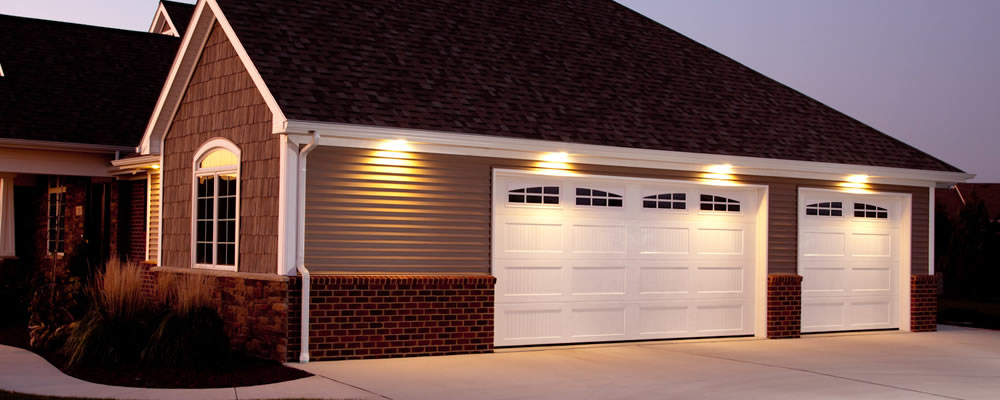Tips & Maintenance
Testing & Maintaining Your Garage Door
People often go into home ownership without realizing how many things need to be inspected and cleaned on a yearly basis. Garage door maintenance is one of the most-overlooked areas for home maintenance because we get into the mindset of if it’s not broke, don’t fix it. Unfortunately, that method of thinking leads to broken garage doors or garage door openers that need immediate attention.
Regular maintenance and testing of all equipment is vital to ensure safe and continual operation.
Visual Inspection
You should examine the garage door and all of the working parts so you become familiar with what you’re looking at. The more familiar you are with the way it should look, the better you will be able to recognize wear/tear and broken parts. Check the garage door springs, cables, rollers, pulleys and other door hardware, including weatherstrip. If you suspect problems, have a qualified professional make the repairs.
WARNING – Springs are under high tension. Only qualified professional should adjust them.
Garage door springs, cables, bracket and other hardware attached to the springs, are under very high tension and, if handled improperly, can cause serious injury or death. Do not attempt to repair or adjust the torsion spring yourself.
Tighten loose bolts or nuts on the tracks or hinges as needed. The normal use of the garage and garage door opener will loosen nuts and bolts over time. Check them on a regular basis to make sure they’re tight and working properly. Never remove or loosen the screws on the bottom brackets of the door. These brackets are connected to the spring by the lift cable and are under extreme tension.
Lubrication
Regularly lubricate the moving parts of your garage door – hinges, springs and the cable where it connects at the bottom panel. Make sure to wipe up any drips. However, it is not necessary to lubricate plastic parts such as plastic roller, plastic idler bearings or the tracking. You can also consult the doors owner’s manual for the manufacturers’ recommendations.
Door Balance & Reverse Feature
Periodically test the balance of your garage door.
- Start with the door closed.
- If you have a garage door opener, use the release mechanism so you can operate the door by hand when doing this test.
- You should be able to lift the door smoothly and with little resistance. It should stay open around three or four feet above the floor. If it does not, it is out of adjustment. Have it adjusted by a qualified service person.
Test the reverse feature every month.
- First, test the balance of the door. If the door is properly balanced, then proceed.
- With the door fully open, place a roll of paper towel on the floor in the center of the door.
- Push the button or transmitter to close the door. The door should reverse within 1 to 2 seconds of making contact with the object. If your opener was installed prior to 1993 it may not have safety photo eyes installed. It is strongly recommended that you replace the opener with a new model which now, by law, come with these safety features installed. If the safety eyes are not reversing correctly, disconnect the opener and do not use it and call a qualified service person immediately.
Winter Maintenance
Make sure that your garage door and floor are kept clear of any snow or ice. Do not store item such as rakes, shovels or brooms near the tracking they could easily fall during the operation of your garage door and cause damage. The sensors are part of the garage door opener and can easily be bumped or knocked out of alignment. Use a soft cloth to clean the ‘eyes’ on the senors, keeping them free of snow, dirt and debris. If the sensor beam is out of alignment, your garage door will not be able to close properly.
During cold temperatures your door may freeze to the ground, especially if you have a non-insulated garage door. Preventative maintenance would be to replace the bottom weatherstrip if yours is old and cracked. To reduce the risk of a frozen door check to make sure there is no water sitting at the bottom of the door. Note: do not keep pushing the button to open the door as this may cause damage to your garage door opener.
Ways to fix a frozen garage door
Tip 1. Take some automotive anti-freeze and put in a spray bottle. Spray along the floor where your garage door comes down and it will soak into the concrete preventing the door from freezing. You may need to repeat this during the winter season. Please note: use with caution if you have pets.
Tip 2. Use a substantial amount table salt along the bottom your door, salt lowers the freezing point of water, which makes freezing more difficult. Clean up salt when you are finished.
Tip 3. Use some warm warm to melt the ice.
Tip 4. Try using a silicone lubricant, the lubricant, like salt, has waterproof properties that drop the freezing point of water.
Tip 5. Gently use an ice scrapper to remove the ice.
Child Safety
- Educate your children. Teach your children the dangers of automatic garage doors.
Make sure that everyone is aware of the dangers incurred by irresponsible operation of a garage door. In the same way as you must explain to children not to touch a hot stove, play with electrical outlets or matches, you must also explain to them that garage doors can be very dangerous and also cause injury or even death.
Never put your hands between sections or near any moving parts of the garage door. Explain to children that if fingers are caught between sections of the garage door or in any moving parts serious injury can occur, even if you do not have an automatic opener installed on the door.
Ensure that your garage door is childproof. Install activation buttons at least five feet above the floor. Keep the remote control up and out of your child’s reach or keep it in a locked car.
Set a good example for children. Make it a rule in your family to never walk beneath a closing door. Also, after activating a garage door, remember not to drive or walk away until you see that the door is completely closed.



